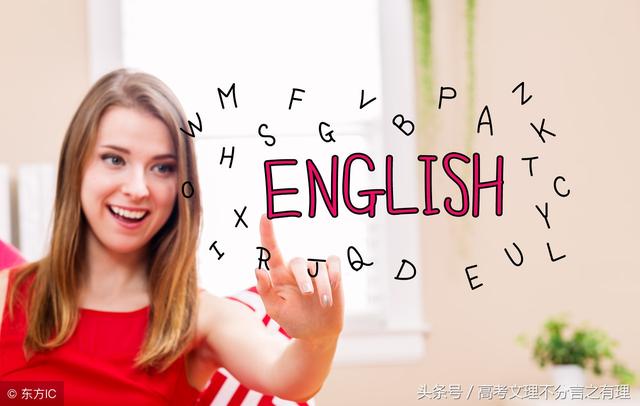高考中细节理解题通常占阅读理解题总数的一半以上。
细节理解题要求考生对阅读材料中的某一具体事实和细节进行理解。它们大都是根据文章中的具体信息如事实、例证、原因、过程、论述等进行提问的。有些问题可以在文章中直接找到答案,有些则需要我们在理解的基础上将有关内容系统化才能找到,比如计算、排序、是非判断、图形比较等。
常见的命题方式通常有:
1.特殊疑问句形式。以when, where, what, which, who, how much/many等疑问词开头引出的问题;
2. 以是非题的形式。true /false, not true / false或EXCEPT,近年这种题型较少;
3. 以According to… 开头提问方式;
4. 以填空题的形式,如:
(1)To avoid attracting mountain lions, people are advised________.
(2)By the first sentence of the passage author means that________.
(3)It seems that now a country’s economy depends much on________.
(4)If you are interested in knowing about what people’s life will be, you may visit________.
(5)The policemen were told “to look the other way” (the underlined part in Paragraph 2) so that________ .
(6)The policeman who said “Good evening” to Rolls wanted to________.
5. 就文中数字、排序、识图等提问。
做细节理解题时,大多数学生易出现的问题是阅读速度太慢,缺乏一定的快速阅读技巧,考生要培养自己快速获取信息的能力。解答此类试题时,不必通篇细看原文,而常常可采取 “带着问题找答案”的方法.先从问题中抓住关键性词语。然后以此为线索。要快速地辨认和记忆事实或细节,就要恰当地运用略读及查读的技巧快速在文章中寻找与此问题相关的段落、语句.仔细品味,对照比较.确定答案。除了运用扫读法(scanning)外,还可以兼用排除法.将“无此细节”和“与此细节相反”的选项排除。
了解细节题干扰选项的特点也有助于考生提高答题的正确率。一般情况下,干扰项有如下几个特点:(1)是原文信息,但不是题目要求的内容;(2)符合常识,但不是文章内容;(3)与原文的内容极其相似,只是在程度上有些变动;(4)在意思上与原文大相径庭甚至完全相反;(5)部分正确,部分错误。
有的细节理解题只要直接辨认不要求读者对客观的事实作出解释或判断,只要求从阅读材料中直接获取信息。同时还要求读者记住重要细节,在必要的时候(做判断、推断或结论的时候)能够准确而迅速地将他们回忆起来。解此类题要求考生快速抓住原文中的关键信息,直接得出答案,但要注意往往答案与原文中的语句并非一模一样,而是用不同的词语或句型结构表达相同的意思。有的细节理解题就需要通过有关词语和句子的转换。利用主要事实、图表、图形来获取信息,然后利用因果、类比、时间、空间等关系将零碎的细节经过一系列加工、整理,方能做出正确的判断.此类试题在高考中占大多数。
值得一提的是,有时原文中的信息可能只是一个短语,甚至一个单词,因此需要我们在阅读中特别仔细才能捕捉到真正有用的信息。
细节理解题大致有如下几种常考题型:
题型一 描写类细节题
描写类细节题,常常考察考生对文中有关人物动作、思想感情、心理活动、观点,或事件的起因、发展、过程、结果等方面的理解。这类描写信息往往较直接,一般不太需要考生对它们进行较深入的理解,对于该类题,考生一般都可以较直接地从原文中找到与题目对应的有关信息。
【典例剖析】
Before birth, babies can tell the difference between loudsounds and voices. They can even distinguish their mother’svoice from that of a female stranger. But when it comes toembryonic learning (胎教), birds could rule the roost. Asrecently reported in The Auk: Ornithological Advances, somemother birds may teach their young to sing even before theyhatch (孵化). New-born chicks can then imitate their mom’s callwithin a few days of entering the world.
This educational method was first observed in 2012 bySonia Kleindorfer, a biologist at Flinders University in SouthAustralia, and her colleagues. Female Australian superb fairy wrens were found to repeat one soundover and over again while hatching their eggs. When the eggs were hatched, the baby birds madethe similar chirp to their mothers—a sound that served as their regular "feed me!" call.
To find out if the special quality was more widespread in birds, the researchers sought the red-backed fairy wren, another species of Australian songbird. First they collected sound data from 67nests in four sites in Queensland before and after hatching. Then they identified begging calls byanalyzing the order and number of notes. A computer analysis blindly compared calls produced bymothers and chicks, ranking them by similarity.
It turns out that baby red-backed fairy wrens also emerge chirping like their moms. And themore frequently mothers had called to their eggs, the more similar were the babies’ begging calls. Inaddition, the team set up a separate experiment that suggested that the baby birds that most closelyimitated their mom’s voice were rewarded with the most food.
This observation hints that effective embryonic learning could signal neurological (神经系统的) strengths of children to parents. An evolutionary inference can then be drawn. "As a parent, doyou invest in quality children, or do you invest in children that are in need?" Kleindorfer asks. "Ourresults suggest that they might be going for quality."
60. Embryonic learning helps mother birds to identify the baby birds which ____________.
A. can receive quality signals B. are in need of training
C. fit the environment better D. make the loudest call
【文章大意】文章介绍了鸟类在胎教方面的超凡本领。实验发现鸟儿在孵化时不停地鸣叫是为了教会以后出生的雏鸟歌唱的本领,从而挑选出能够适应环境的雏鸟。
60.C 【解析】细节理解题。根据倒数第二段中的"the baby birds that most closely imitated their mom’s voice were rewarded with the most food"和最后一段"Our results suggest that they might be going for quality."可知,模仿母鸟模仿得最好的雏鸟得到最多的食物,研究结果表明,母亲会选择质量好的雏鸟。由此可知,胎教帮助母鸟辨别出那些适应环境较好的孩子。

题型二 信息寻找题、广告阅读题
信息寻找题一般在应用文体中较常见,体现于查字典、阅读广告、公告、演出海报、车船航班时间表等之中。这类阅读材料包含的某一方面的信息非常全面,能满足各种人对信息的需求,但在高考试题中,常常是就某一方面提问,考生完全没有必要从头到尾仔细阅读,因为材料中有很多冗余无效信息。做此类题时,宜采用“题干定全法”。即:先阅读题干,然后根据问题要求,有针对性地阅读相关部分快速寻找有效信息。
广告是阅读理解题常考的一种题材。广告属应用文体。严格来说广告属快速寻找信息题。但是广告有着其他快速寻找信息题不同的特点。广告文体简洁明快,省略了大量的词语,达到了篇幅小、信息多的目的。同时具有语言精练,形象性、鼓动性强的良好效果。广告阅读题多为细节理解题,关键在于正确理解广告内容。考生必须具备较强的语言运用能力,熟悉文化背景,利用各种手段(如:补全、联想、推测等)正确解读广告的内容。通常运用“补全成分法”和“联想推测法”两种方法来解读广告的内容。做题方法同样采用“题干定向法”。
(1)补全成分法
省略名在广告体阅读材料中大量出现,可以说广告阅读理解材料中大多数句子都是省略句。我们应结合全文语境及逻辑关系将省略句补全,从而更加准确地理解。如:Driver wanted. 根据文义,可将该句补充为:A driver will be wanted. (招聘一名司机)。
(2)联想推测法
在些广告时间、日期、地点、电话、票价等用了缩略词,甚至一概没有提及,这就需要考生前后连贯,充分想象,整体理解。搜寻已知信息,推断语篇意义。
为节省篇幅,特别是在商业广告中,常使用缩写词,尽管有些缩写不太规范,但却常用,常见的缩写词有:
Tel. =telephone number
Ph. =phone Add (r). =address
co. =company Ltd=Limited
Max=maximum Min=minimum
hr=hour t=time
fig=figure ft=foot
ml=mile doz=dozen
Mt=Mountain P=page
prof. =professor Dr. =doctor
s=south n=north
w=west Sta=Station
pop=popular vs=versus
Xmas=Christmas info=information
VIP=very important persons hrs=hours
aft=after ad=advertisement
p/t=part time exp=experienced
PC=personal computer MA=Master of Arts
BS degree=bachelor's degree (学士学位)
题型三 数据计算题
此类试题一般要求考生能根据阅读材料中给出的有关数据,找出计算关系,通过计算,得出正确的结论。这类计算一般来说比较简单,关键是要弄清各数据间的逻辑关系,选准比较的数据,弄清单位换算关系,确定计算方法,问题便迎刃而解了。对于数据较多、项目复杂用时间或空间跨度较大的短文,通常可采用“列表法”,即按一定的规律将数据分门别类地列出,化模糊为清晰,为计算打下基础。对于相对不太复杂的数据,可采用“推算法”,即以有关数据为基准,进行简单的运算就可得出。
【典例剖析】
A Summer Horse Camp in Montana and Wyoming for Teen Girls
Dates: June 23 — July 5, 2017
Ages: 14—16 (grades 8, 9 & 10)
Tuition: $2,955 (not includingairfare)
Start: Bozeman, Montana
End: Jackson, Wyoming
Traversing(横越) the Continental Divide, this camp takes place on the borders of Montana, Idaho, and Wyoming, where girls will go whitewater rafting, scenic river floating, hot spring soaking, and will tour both Yellowstone and Teton National Parks.
Girls who participate in this adventure will gain knowledge and appreciation with each turn, becoming keepers of the land, and being introduced to skills necessary to work with pack animals in the wilderness. All of this adventure and learning takes place in a fun, non-competitive atmosphere, which will make this an adventure to remember.
Trip Campsites & Facilities
Eight nights are spent in tents in public "frontcountry" campgrounds where we have pre-assigned campsites with neighbors and campground hosts nearby, running drinkable water, and private outhouses(屋外厕所)or flushing toilets(抽水马桶).
Four nights are spent in tents in"backcountry"wilderness areas where we will purify our water before drinking and learn and practice basic Leave No Trace camping skills such as how to select a campsite, how to go to the bathroom, and how to keep clean outdoors. All backcountry campsites in this travel plan have an outhouse available to us.
Why Choose This Trip
Girls who love horses but also want to go rafting, stand up paddle boarding, and explore Yellowstone Country will automatically love this camp. From rivers, to lakes, to mountains, Yellowstone Horseback Adventure camp will give girls a variety of outdoor settings in which they can fall in love with the natural world!
1.How long will the camp last?
A.8 days. B.10 days. C.12 days. D.13 days.
【文章大意】本文是一篇应用文。一个适合女孩参加的骑马夏令营及相关事宜。
1.D【解析】根据文章开篇部分中的"Dates: June 23 — July 5, 2017"可知,夏令营将持续13天。故选D。
题型四 排序题
这种试题要求考生根据事情发生的先后顺序和句子之间的逻辑关系,找出事件的正确顺序。
做此类题目可采用"首尾定位法",即先找出第一个事件和最后一个事件,这样可以迅速缩小选择范围,从而迅速找到答案。阅读理解的文章如果是记叙文,排序题通常以事件发生的时间为线索;如果是说明文,排序题通常以说明的先后顺序为线索;如果是议论文,排序题通常以逻辑顺序为线索。从近几年高考试题来看,这类试题主要出现在记叙文和说明文中。
题型五 图文转换题
此类试题要求根据短文中的描写找出相应的图形,或根据图形选出相应的文字。可采用“文字锁定法”,即找出描述图形的句段,按“文”锁“图”,迅速锁定相关图形,或用“图形标示法”,在图形中标出相应的内容,以便做题。
题型六 代词指代题解题技能
代词指代题要求考生一定的上下文推测代词的指代意义。此类题一般是在人物或事物关系比较复杂的情况下使用的一种题型,所以理清人物及事物之间的逻辑关系是关键所在。
 加载中,请稍侯......
加载中,请稍侯......
精彩评论